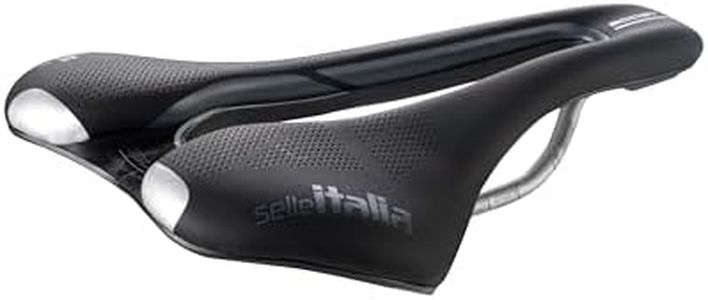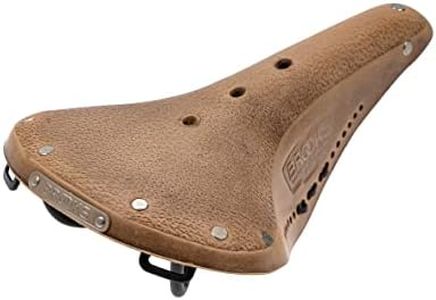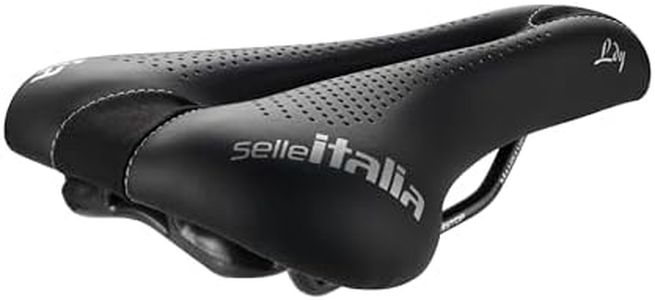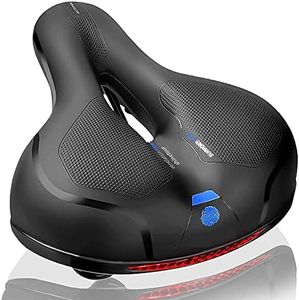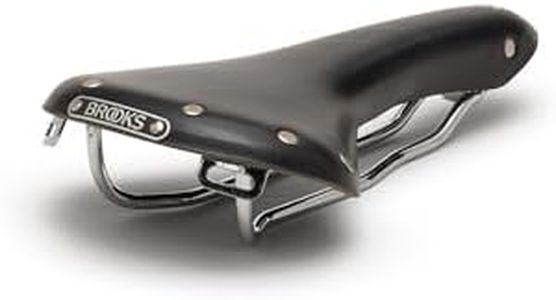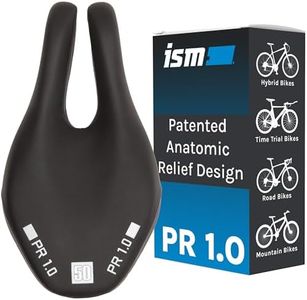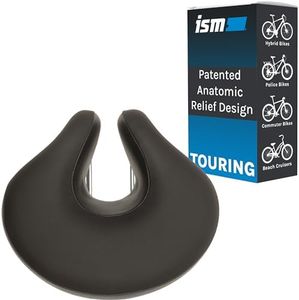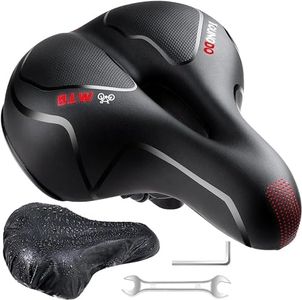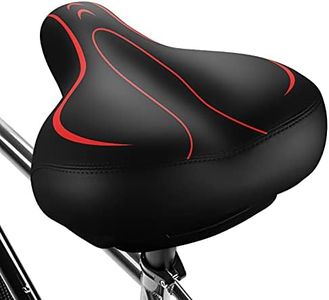We Use CookiesWe use cookies to enhance the security, performance,
functionality and for analytical and promotional activities. By continuing to browse this site you
are agreeing to our privacy policy
10 Best Comfortable Bike Seats
From leading brands and best sellers available on the web.Buying Guide for the Best Comfortable Bike Seats
Choosing a comfortable bike seat is important because it directly affects how much you enjoy riding your bike and how long you can ride without discomfort. The best bike seat for you will depend on your type of cycling, your body shape and size, and your individual preferences for comfort. It's worth taking your time to learn about the features that make a bike seat comfortable and to consider how you'll use your bike most often.Seat WidthSeat width refers to how wide the bike seat is across its widest part. This is a crucial factor because the seat needs to support your sit bones comfortably. Narrower seats are often preferred by riders who lean forward while cycling, such as road cyclists, while wider seats are generally more comfortable for riders who sit more upright, such as casual riders or commuters. To pick the right width, consider your typical riding posture and match the seat width so it appropriately supports your sit bones without being so wide that it causes chafing.
PaddingPadding is the soft material inside the seat that adds cushioning. Seats with thick, soft padding can feel comfortable on short rides but may cause discomfort on longer rides as your body sinks in and pressure points develop. Seats with firmer padding may feel less plush at first, but they actually provide better support over time for long-distance rides. If you mostly take shorter rides, a softer, more padded seat may suit you, but for extended rides, firmer padding is usually the best choice.
Seat ShapeThe shape of the seat refers to both its profile (how it looks from the side) and its surface (how it supports your body). Some seats are flat, while others have a slight curve, and nose length can vary. Flat seats can allow for more body movement, while curved seats help keep you in a particular position. If you like to change your position a lot, a flatter seat might be better; if you prefer to stay in one riding position, a seat with a gentle curve may be more comfortable.
Cut-out or Relief ChannelA cut-out or relief channel is a groove or hole in the center of the seat designed to relieve pressure on sensitive areas and improve airflow. This feature can make a significant difference if you experience numbness or discomfort in the pelvic area during or after rides. If you’ve had this issue before, or you ride for long periods, a seat with a cut-out or channel might be a good match for you.
Seat Cover MaterialThe seat cover material is what actually touches your body during a ride. Common materials include synthetic covers, real leather, or fabric. Synthetic covers tend to be resistant to weather and easier to maintain, while leather seats can mold to your shape over time and become more comfortable but need more care and protection from rain. If you ride in all weather, a synthetic seat may be more practical; if you want a seat that becomes unique to you over time, leather might be worth the investment.
Suspension and RailsSome seats have built-in suspension or flexible rails that act as shock absorbers, helping to smooth out bumps from the road or trail. Seats with this feature can be especially good for casual riders, commuters, or those who ride on rough surfaces. If your rides are mostly on smooth pavement, you may not need much suspension, but if your roads or trails are bumpy, a seat with some shock-absorbing features can add a lot to your comfort.



